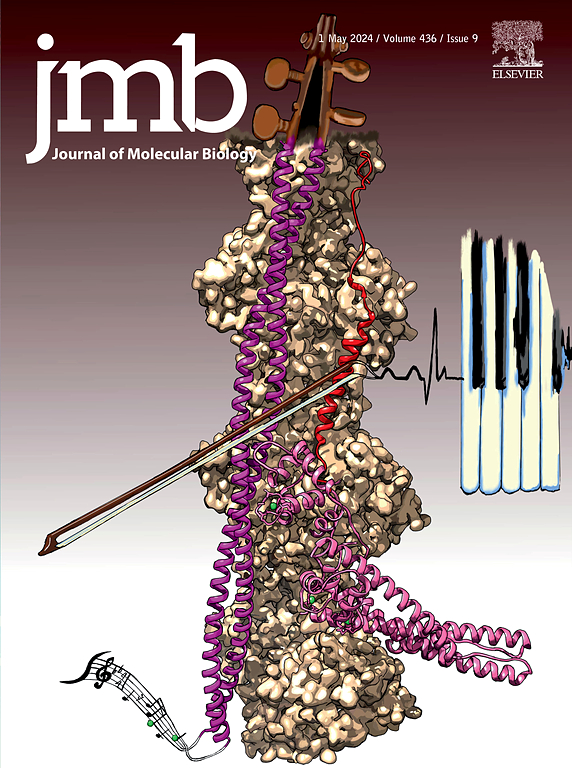DeepMS: super-fast peptide identification using end-to-end deep learning method
IF 4.5
2区 生物学
Q1 BIOCHEMISTRY & MOLECULAR BIOLOGY
引用次数: 0
Abstract
Mass spectrometry (MS) has emerged as a powerful omics analysis technique, particularly in proteomics, where the initial step involves identifying MS spectra as peptide sequences. However, this process often requires substantial computational resources and expertise, taking hours or even days to complete, thereby limiting the widespread adoption of MS-based omics technologies. To overcome this challenge, we have developed DeepMS, a deep learning-based spectra identification algorithm that overcomes the speed limitations of traditional spectra identification methods. We conducted comprehensive benchmark tests, comparing six deep learning algorithms. Based on the results, we selected the VGG16 algorithm as the core model for DeepMS. This algorithm enables super-fast, end-to-end identification of peptide sequences from MS spectra with high accuracy. DeepMS is adaptable to post-translational modifications, enhancing its versatility. In fact, its identification speed surpasses the generation rate of MS spectra, enabling super-fast identification. Furthermore, we demonstrate the practical application of DeepMS in microorganism detection, highlighting its utility in clinical testing. Through the implementation of DeepMS, our aim is to revolutionize the field of MS-based proteomics and facilitate the broader application of omics technologies, opening new avenues for rapid and efficient analysis in various research and clinical domains.

DeepMS:使用端到端深度学习方法的超快速肽识别。
质谱(MS)已成为一种强大的组学分析技术,特别是在蛋白质组学中,其中第一步涉及将MS谱识别为肽序列。然而,这个过程通常需要大量的计算资源和专业知识,需要数小时甚至数天才能完成,从而限制了基于ms的组学技术的广泛采用。为了克服这一挑战,我们开发了DeepMS,这是一种基于深度学习的光谱识别算法,克服了传统光谱识别方法的速度限制。我们进行了全面的基准测试,比较了六种深度学习算法。基于这些结果,我们选择了VGG16算法作为DeepMS的核心模型。该算法能够超快速,端到端鉴定肽序列从质谱与高精度。DeepMS适应翻译后修饰,增强了其通用性。实际上,其识别速度超过了质谱的生成速度,实现了超快速识别。此外,我们展示了DeepMS在微生物检测中的实际应用,突出了其在临床检测中的实用性。通过实施DeepMS,我们的目标是彻底改变基于ms的蛋白质组学领域,促进组学技术的广泛应用,为各种研究和临床领域的快速高效分析开辟新的途径。
本文章由计算机程序翻译,如有差异,请以英文原文为准。
求助全文
约1分钟内获得全文
求助全文
来源期刊

Journal of Molecular Biology
生物-生化与分子生物学
CiteScore
11.30
自引率
1.80%
发文量
412
审稿时长
28 days
期刊介绍:
Journal of Molecular Biology (JMB) provides high quality, comprehensive and broad coverage in all areas of molecular biology. The journal publishes original scientific research papers that provide mechanistic and functional insights and report a significant advance to the field. The journal encourages the submission of multidisciplinary studies that use complementary experimental and computational approaches to address challenging biological questions.
Research areas include but are not limited to: Biomolecular interactions, signaling networks, systems biology; Cell cycle, cell growth, cell differentiation; Cell death, autophagy; Cell signaling and regulation; Chemical biology; Computational biology, in combination with experimental studies; DNA replication, repair, and recombination; Development, regenerative biology, mechanistic and functional studies of stem cells; Epigenetics, chromatin structure and function; Gene expression; Membrane processes, cell surface proteins and cell-cell interactions; Methodological advances, both experimental and theoretical, including databases; Microbiology, virology, and interactions with the host or environment; Microbiota mechanistic and functional studies; Nuclear organization; Post-translational modifications, proteomics; Processing and function of biologically important macromolecules and complexes; Molecular basis of disease; RNA processing, structure and functions of non-coding RNAs, transcription; Sorting, spatiotemporal organization, trafficking; Structural biology; Synthetic biology; Translation, protein folding, chaperones, protein degradation and quality control.
 求助内容:
求助内容: 应助结果提醒方式:
应助结果提醒方式:


